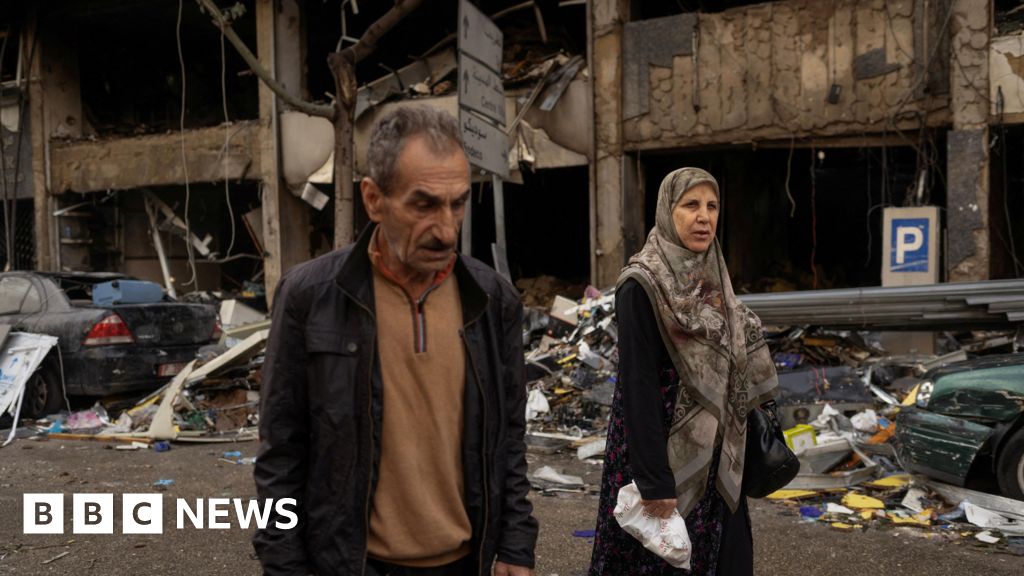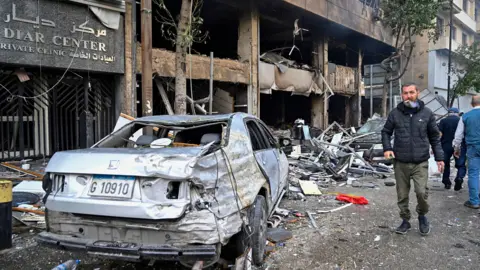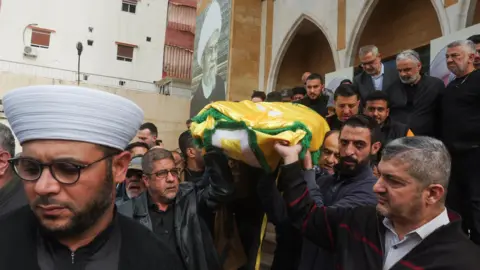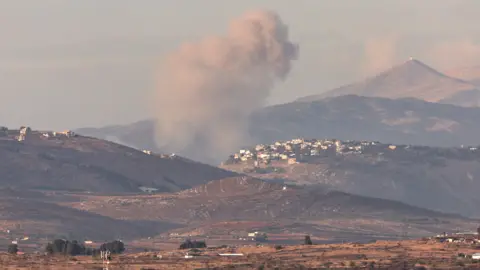
 EPA
EPAEfforts for a ceasefire between Israel and Hezbollah have intensified, with Lebanon’s government expected to respond to a draft deal presented by the US, amid an escalation of Israel’s air attacks across the country.
The intensification in the past week, which has killed dozens of people in Lebanon, appears aimed at putting pressure on both Hezbollah and the Lebanese government to accept an agreement to end more than a year of conflict.
Details remained unclear about the draft that was delivered last week by the US ambassador to Lebanese Parliament Speaker Nabih Berri, who has been backed by Hezbollah to negotiate.
Lebanese media reported the text had been received “positively”.
Israel has stepped up its air attacks on Lebanon’s south, where it is also conducting a ground invasion, the eastern Bekaa Valley and Beirut. In the capital, it has carried out multiple strikes on the southern suburbs, known as Dahieh, where Hezbollah is based.
On Sunday, central Beirut was hit for the first time in a month, in attacks that killed seven people, according to the Lebanese health ministry.
One of the victims was Mohammed Afif, who acted as the Hezbollah spokesman and was one of the few remaining public faces of the group. He was killed in a strike on a building in the densely populated Ras al-Nabaa neighbourhood in the afternoon.
Hours later, a strike hit the busy Mar Elias area, another part of Beirut rarely targeted.
In Lebanon, the recent attacks are seen as part of Israel’s strategy to force Hezbollah and Lebanon to agree to a ceasefire, and an indication that it is prepared to expand its offensive by killing non-military members of the group and striking places outside areas where it has a strong presence, possibly to stir anti-Hezbollah sentiment.
 Reuters
ReutersSince the conflict intensified in late September, Lebanese authorities have said any deal should be based on the United Nations Security Council Resolution 1701, which ended the 2006 war between Hezbollah and Israel.
The resolution includes the removal of the group’s fighters and weapons in areas between the Blue Line – the unofficial frontier between Lebanon and Israel – and the Litani River, about 30km (20 miles) from the boundary with Israel.
A potential agreement would likely include the creation of an international mechanism to monitor its implementation, and the deployment of thousands of additional troops of the Lebanese army to southern Lebanon.
The deal would also stipulate a timeline for the withdrawal of Israeli forces from the south.
A sticking point remains, however, related to Israel’s demand to have the right to act inside Lebanon if there is any violation of a deal – something the Lebanese authorities consider unacceptable.
 EPA
EPAAmos Hochstein, who has led the Biden administration’s diplomatic efforts, was expected to return to Beirut on Tuesday, but his trip has been delayed until there are more clarifications about the Lebanese position, the Axios website reported, quoting unnamed US officials.
Israel’s stated goal in its war against Hezbollah is to allow the return of about 60,000 residents who have been displaced from communities in the country’s north because of Hezbollah’s rocket fire.
The group launched its campaign the day after the Hamas attacks on southern Israel last year, saying it was acting in solidarity with Palestinians in Gaza.
In the past year, Israel’s attacks in Lebanon have killed 3,841 people and wounded nearly 15,000 others, according to the Lebanese health ministry, which does not distinguish between civilians and combatants.
More than one million people have been displaced, putting more pressure on a country that was already struggling to cope after years of a severe economic crisis.
Hezbollah’s attacks have killed 31 soldiers and 45 civilians inside Israel, Israeli authorities say. Another 45 Israeli soldiers have been killed fighting in southern Lebanon.
Israeli air strikes have destroyed large parts of Hezbollah’s infrastructure and killed many of its leaders, but the group continues to carry out daily attacks, although not with the same intensity.




